Fundraising
Fundraising Dinner
The "Circle of Roses" fundraising dinner is held in the fall of each year. Possible ways of support include donating items for the auction, being a Table Sponsor, purchasing tickets, and Advertisement in the evening program.
Information is available by calling the Center at 702-564-4224.
Holy Bears Benefiting Saint Therese Center—Diocese of Las Vegas HIV/AIDS Outreach & Outreach in Guaymate Dominican Republic

 The initial design for the Bear is a black and white bear (black & white are the colors of the Dominican Order). This ties in the fact that the director of the Saint Therese Center is a Dominican Priest and a part of the world wide Religious Order of Dominicans, many of whom serve various populations of HIV+ individuals. Half of the sales from this bear will also benefit a group of Dominican Sisters from the Philippines who are ministering to the HIV+ men, women and children in Loitokitok (pronounced: loi-talk-e-talk) Kenya, Africa.
The initial design for the Bear is a black and white bear (black & white are the colors of the Dominican Order). This ties in the fact that the director of the Saint Therese Center is a Dominican Priest and a part of the world wide Religious Order of Dominicans, many of whom serve various populations of HIV+ individuals. Half of the sales from this bear will also benefit a group of Dominican Sisters from the Philippines who are ministering to the HIV+ men, women and children in Loitokitok (pronounced: loi-talk-e-talk) Kenya, Africa.
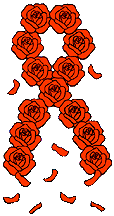 On the chest of the bear is a Red Ribbon, made out of roses. The red ribbon is the international symbol for AIDS awareness. The rose is a symbol of Saint Therese (the Little Flower). Therese promised, "I will spend my heaven doing good upon earth... I will let fall from heaven a shower of roses." Thus, the falling petals from the AIDS ribbon. Also they signify the many lives of people infected with HIV that, through the intercession of Therese, she has helped.
On the chest of the bear is a Red Ribbon, made out of roses. The red ribbon is the international symbol for AIDS awareness. The rose is a symbol of Saint Therese (the Little Flower). Therese promised, "I will spend my heaven doing good upon earth... I will let fall from heaven a shower of roses." Thus, the falling petals from the AIDS ribbon. Also they signify the many lives of people infected with HIV that, through the intercession of Therese, she has helped.
 The Tag on the side of the bear has the well known "Welcome to Las Vegas" sign with the "Welcome" removed and "Therese" placed in. this signifies the work of the Saint Therese Center in the Roman Catholic Diocese of Las Vegas - which is the southern part of the state of Nevada.
The Tag on the side of the bear has the well known "Welcome to Las Vegas" sign with the "Welcome" removed and "Therese" placed in. this signifies the work of the Saint Therese Center in the Roman Catholic Diocese of Las Vegas - which is the southern part of the state of Nevada.
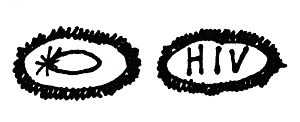 The footpads of the bear contain the Holy Bear Symbol (Halo) and the letters HIV standing for the Human Immunodeficiency Virus. The outreach of the Saint Therese Center is to all those infected and affected by the virus. It is also a reminder to all people living with HIV/AIDS that they and we are all called to be holy!
The footpads of the bear contain the Holy Bear Symbol (Halo) and the letters HIV standing for the Human Immunodeficiency Virus. The outreach of the Saint Therese Center is to all those infected and affected by the virus. It is also a reminder to all people living with HIV/AIDS that they and we are all called to be holy!
Click on the Holy Bear to download Order Form

Commenmorative Holiday Ornament
Collector's Edition—24 KT Gold Finish

Together We Can Find the Way!
We invite you to support our vital programs through the purchase of our collector's edition holiday ornament. This year's charming design features a festive North Pole directional sign and delightful little holiday penguin ready to help find the way to hope, dreams, and the possibilities of all. Segments of the decorative pole are trimmed with the red international symbol of HIV/AIDS awareness. This collector's edition ornament is solid brass with a 24 karat gold finish, accented by brightly colored enamels, measuring 3.37 x 2.39 inches. This beautiful ornament is distinctively packaged in a gold foil stamped box with velour insert.
Saint Therese Center HIV Outreach
$20.00 Ornament or 6 for $100
Click here to download an order form for the Holiday Ornament!
Norman – Basket Maker
In the course of all these pictures of baskets that Norman has made for the Saint Therese Center HIV Outreach, we have also included a little history of baskets. Enjoy the story and the looks of Norman’s great creations.
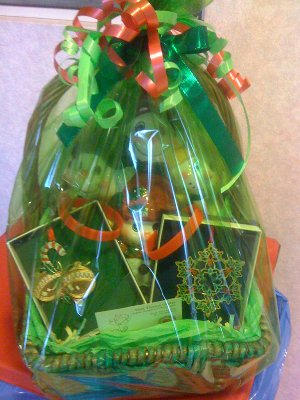 The weaving of baskets is as old as the history of man. Traces of baskets have been found in the Egyptian pyramids and woven basket liners have left their impressions inside the fragments of ancient pottery. As soon as man (and woman!) were able to plait fibers together, they began to experiment with structures for woven containers.
The weaving of baskets is as old as the history of man. Traces of baskets have been found in the Egyptian pyramids and woven basket liners have left their impressions inside the fragments of ancient pottery. As soon as man (and woman!) were able to plait fibers together, they began to experiment with structures for woven containers.
Baskets were needed as containers for everything imaginable—food, clothing, seeds, storage and transport. I always tell my students that before Tupperware® and Samsonite® we had baskets!
So how did baskets travel from one part of the world to another? With the explorers, of course. And this is how the various techniques of baskets also traveled to other parts of the world.
As the explorers arrived in new lands, they traded goods. The goods were contained in baskets. Thus, as the recipient of the goods looked over the basket, he/she then applied that technique to the materials of their own land. This explains how so many Asian techniques (like hexagonal weaves) are found in European baskets, and how European techniques were then carried over to the Americas.
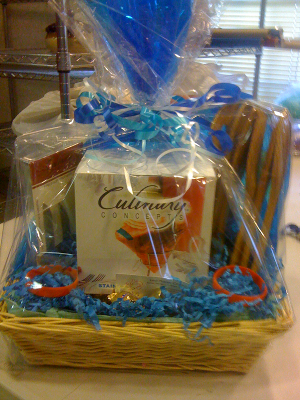 Thus, the basic types of basket weave patterns can be applied to grasses, trees and other natural fibers worldwide.
Thus, the basic types of basket weave patterns can be applied to grasses, trees and other natural fibers worldwide.
Coiling is a technique of winding up the fiber like a snake while stitching it every quarter of an inch or so. The inner coiled material was usually grasses and the sewing material might be a stronger grass or stripped down tree fibers. The Native Americans of the Southwestern states of the U.S. have long perfected coiling with grasses. Their wrapping usually covers the inner grasses completely.
Coiling with sweetgrass is done in West Africa, and those techniques arrived in this country with the African slaves. Today sweetgrass baskets are still woven in the eastern U.S. coastal states. Yet another kind of coiled basket is woven from pine needles—the longer the better. These baskets are popular in Florida and the Northwestern U.S. Usually they're sewn with raffia. (Raffia is the fiber of the Madagascar palm tree—very soft, waxy and easy to sew with.)
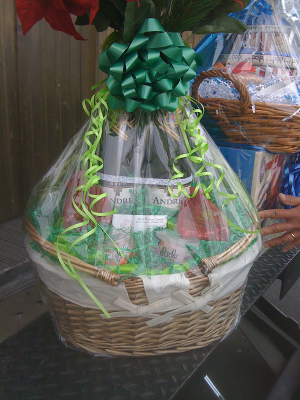 Splint weaving is the technique of weaving with flat materials. In Asia, these are made with reed and cane
(the products of the vine calamus rotang), which grows in the rainforest of Indonesia. The vines are cut, transported by barge to ports where they are then exported to China for processing into the smooth coils of cane and reed. The cane is from the bark and the reed is from the core of the vine. So, in much the same way that trees become lumber, calamus rotang becomes reed and cane.
Splint weaving is the technique of weaving with flat materials. In Asia, these are made with reed and cane
(the products of the vine calamus rotang), which grows in the rainforest of Indonesia. The vines are cut, transported by barge to ports where they are then exported to China for processing into the smooth coils of cane and reed. The cane is from the bark and the reed is from the core of the vine. So, in much the same way that trees become lumber, calamus rotang becomes reed and cane.
Note: It doesn't harm the rain forest to harvest these fibers. They grow up into the trees and are pulled out of the trees without cutting down the trees.
Splint weaving in Europe and the Americas is done today with reed and cane, but also with the traditional fibers of years past: oak, ash and hickory. Trees are cut down, soaked in water, then finally split open and "peeled" from the inside to make weavable strips.
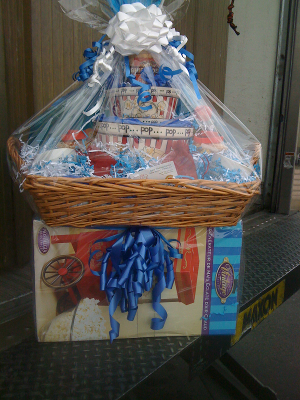 Round fibered weaving is done with a tremendous variety of fibers. The previously mentioned reed and cane are processed into round sizes as well as flats. Willow, honeysuckle, grapevine, Virginia creeper and many other sturdy durable vines have been used for centuries to weave baskets. The deciding factor is: will the fiber bend enough to be woven, and will it tolerate the abuse of being handled as a basket?
Round fibered weaving is done with a tremendous variety of fibers. The previously mentioned reed and cane are processed into round sizes as well as flats. Willow, honeysuckle, grapevine, Virginia creeper and many other sturdy durable vines have been used for centuries to weave baskets. The deciding factor is: will the fiber bend enough to be woven, and will it tolerate the abuse of being handled as a basket?
What kinds of new fibers are being used today? Traditional styles and materials are always continuing. However, innovative basket weavers are always experimenting with fibers of the new age. Newspapers, aluminum, plastics, steel, paper...you name it! If it's flexible, someone has probably woven it into a basket. After all, if you were stranded on a deserted island, wouldn't you, too, learn to weave with whatever was there?

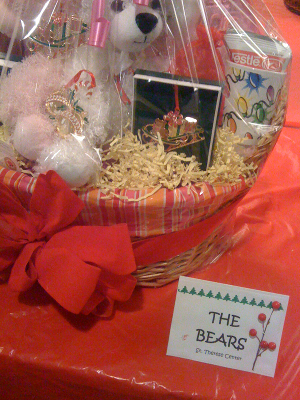
Information About the Center & HIV Booths at Health Fairs & Workshops
We have the ability to have volunteers from the Center at an event or after Masses with information about the Saint Therese Center, HIV and AIDS, as well as Abstinence. Care notes and information pamphlets are available.
Mass Celebrations
Father Joseph is also available for preaching at all the masses and celebrating all or some on a weekend—informing the congregation about the ministry and outreach of the Saint Therese Center HIV Outreach. Call to schedule with Father Joseph in advance, 702-564-4224. You may view his current schedule of masses on our Facebook page.
Other Fundraising Events
The Saint Therese Center holds other various fundraising events throughout the year. Visit our Calendar of Events page for additional information.

